Comments (4)
Eric Williams
Timely topic
Tom J
Excellent article Brett !
David Goodwin
Straightforward and helpful
Ian Stewart
Great article

Normally at this time of year, I’d be winding down for a summer break after an admittedly brutal 3 months on the road speaking at conferences and events all around the world.
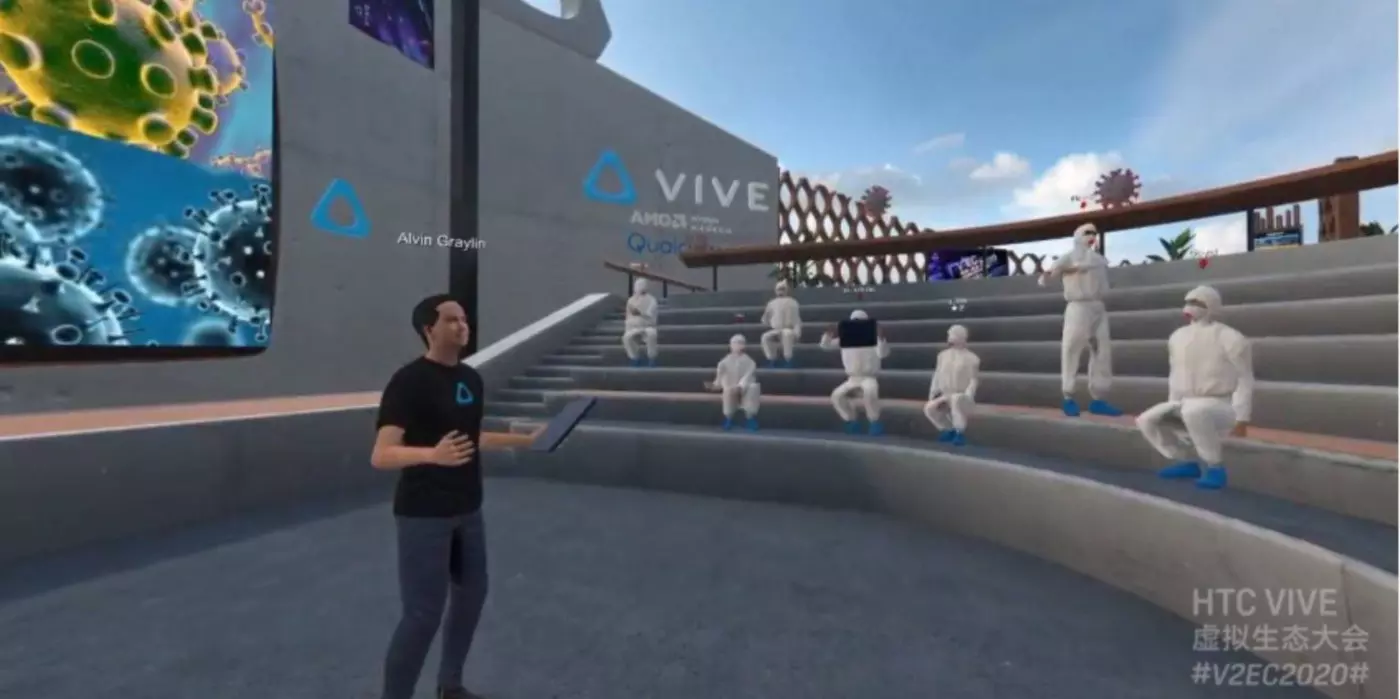
HTC Vive’s Ecosystem Press Conference in VR (Source: VIVE China)
In 2019 that meant 33 countries for the calendar year and an aggregated audience of more than 30,000 people, all on the ground, in person. Book signings, gala dinners, more airports than I can count, and many, many timezone changes. But 2020 has been, obviously, a very different year for my colleagues and I.
While almost all in-person conferences and events have been canceled during the CoVID-19 pandemic, organizations wishing to remain both top of mind and relevant from a thought leadership perspective, have found themselves experimenting with different approaches to the virtual event world. While Zoom has been a popular choice for panel discussions and interview style events, virtual keynotes can still be delivered either live or pre-recorded, giving some flexibility in terms of setup.
Barbara Corcoran and I recently spoke at a showcase event for Inspire Speakers in Sydney, Australia. The event was live, so required an attempt to simulate a typical keynote or conference Q&A environment. Both Barbara and I tuned in remotely from NYC, live from our respective homes. While Barbara used her Emmys and Golden Globe as a backdrop seated at her desk, I chose a green screen effect with an NYC backdrop, standing and presenting to camera.
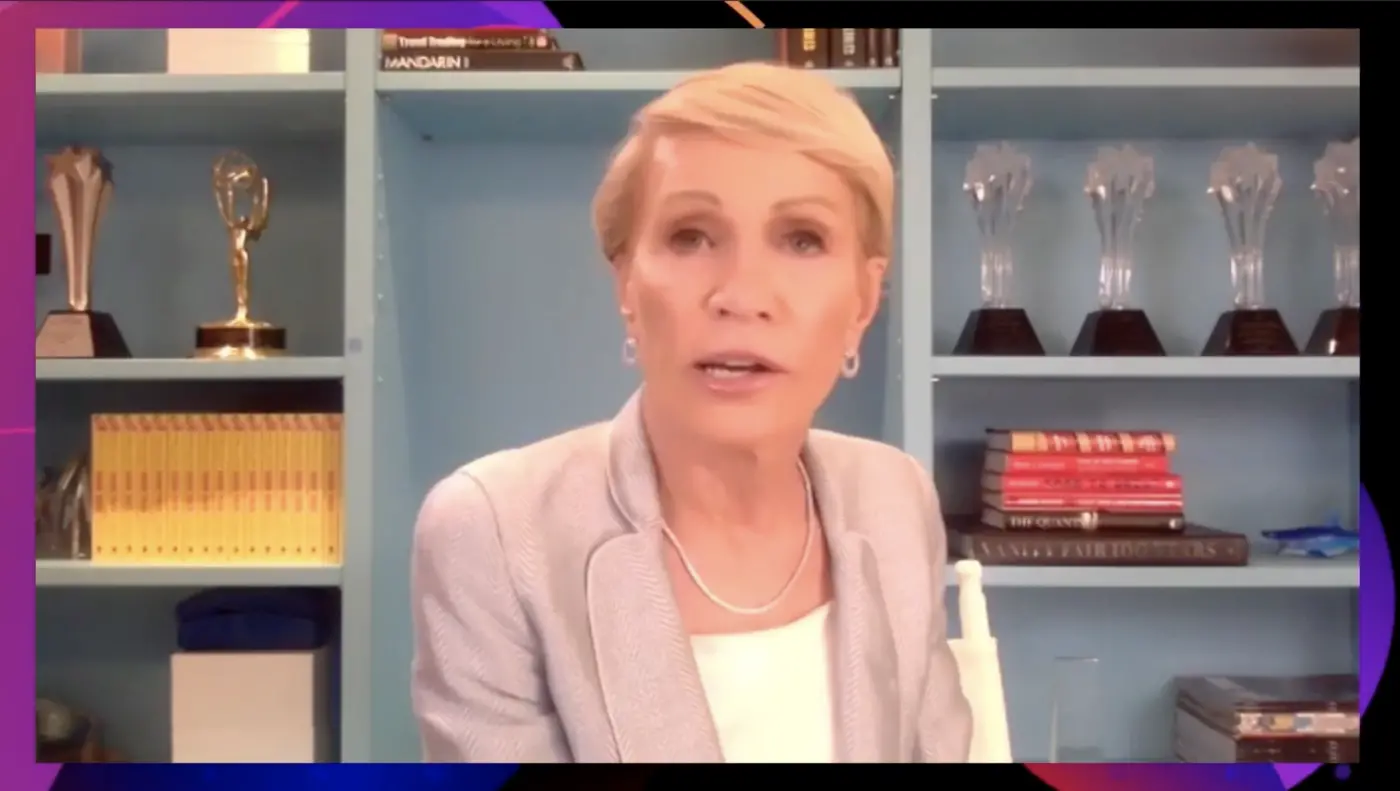
Barbara Corcoran speaking about her Real Estate and Shark Tank success (source: Inspire Speakers)
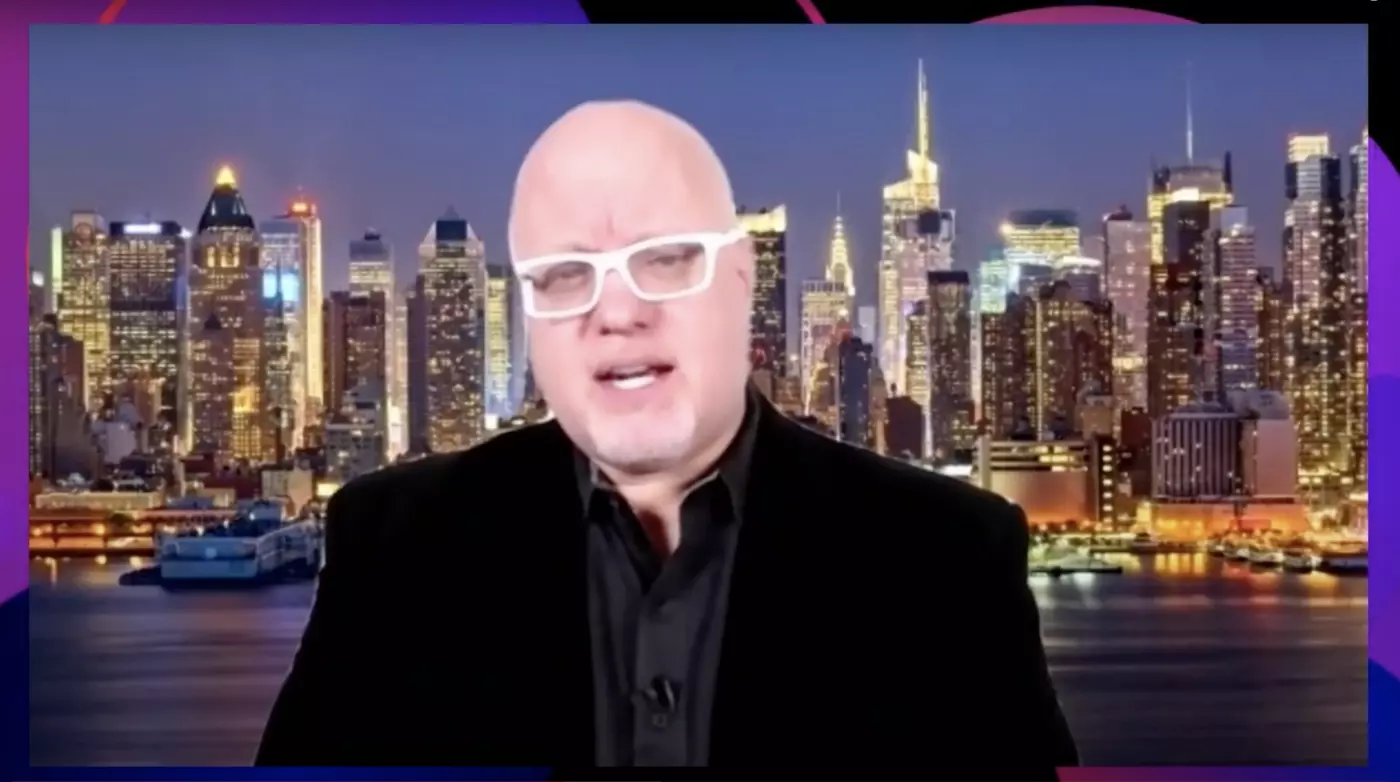
I chose an NYC Background as my virtual backdrop more like a Newscaster (source: Inspire Speakers)
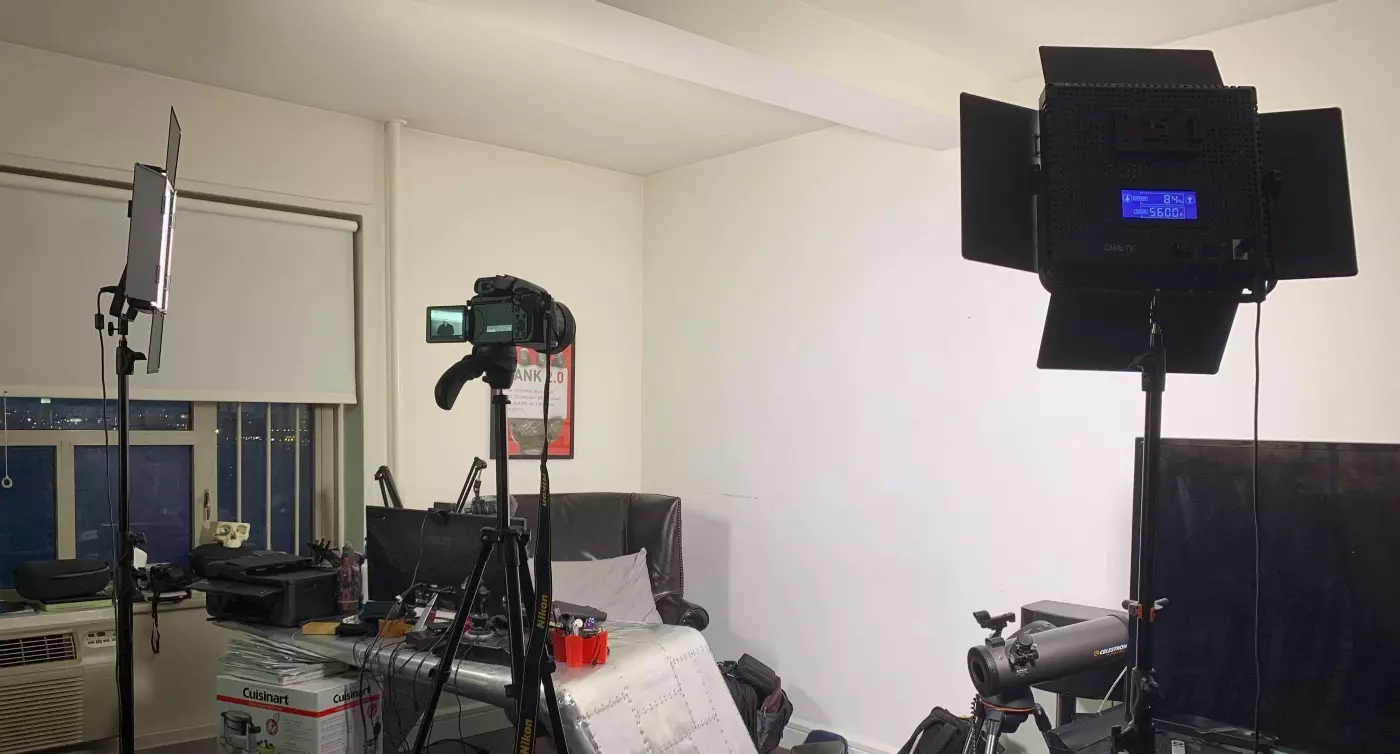
This is the lighting and studio setup for my standing virtual keynotes/Q&A
For these events, I’m typically using either a 1080p webcam or pre-recording in 4K using a DSLR (Nikon P1000 is my current rig). While there are streaming apps and software to stream via a DSLR, Zoom and other platforms have streaming limitations when it comes to bandwidth, so I find 1080p generally works fine for most live streams. The quality difference between a 4K pre-record and a live-stream is obvious as you can see from the screengrab below.
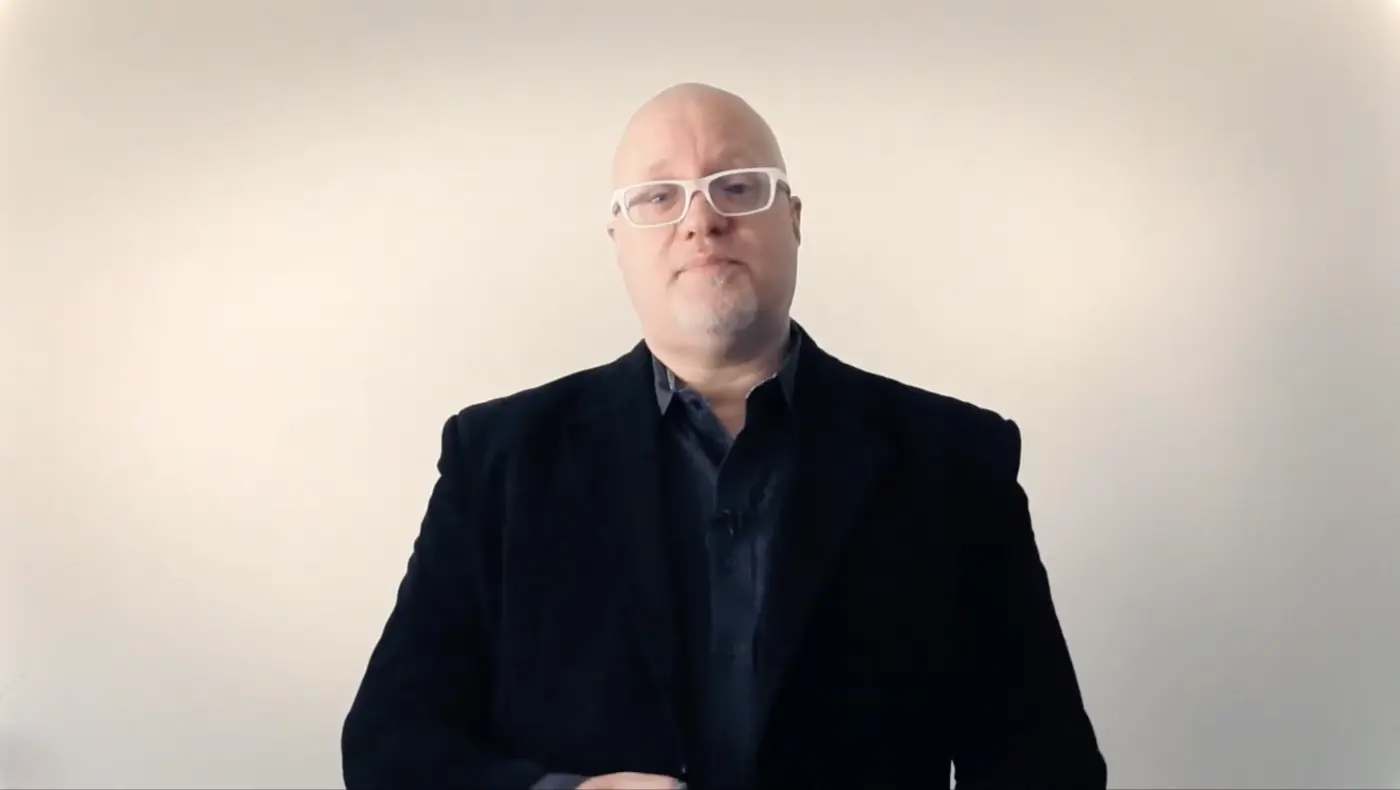
Speaking at Emerge Virtual Conference for Financial Health Network
For virtual events where there is a Q&A, you’ve again got two approaches. You can work from a webcam setup seated like the event below where I spoke for Techsauce in Thailand live on a Q&A.

Tony Robbins takes the virtual zoom event paradigm to entirely new levels with reportedly around 400k attendees over a 7 day period. To enable a studio type approach to Q&A you’ll need a minimum of a lavaliere microphone (wired or wireless) broadcast earpiece where you can hear questions coming in from participants or the emcee in real-time. It takes a little more setup, but I’ve used a single Apple AirPod to hear the stream, along with a radio transceiver-based lav mic both processed through my computer.
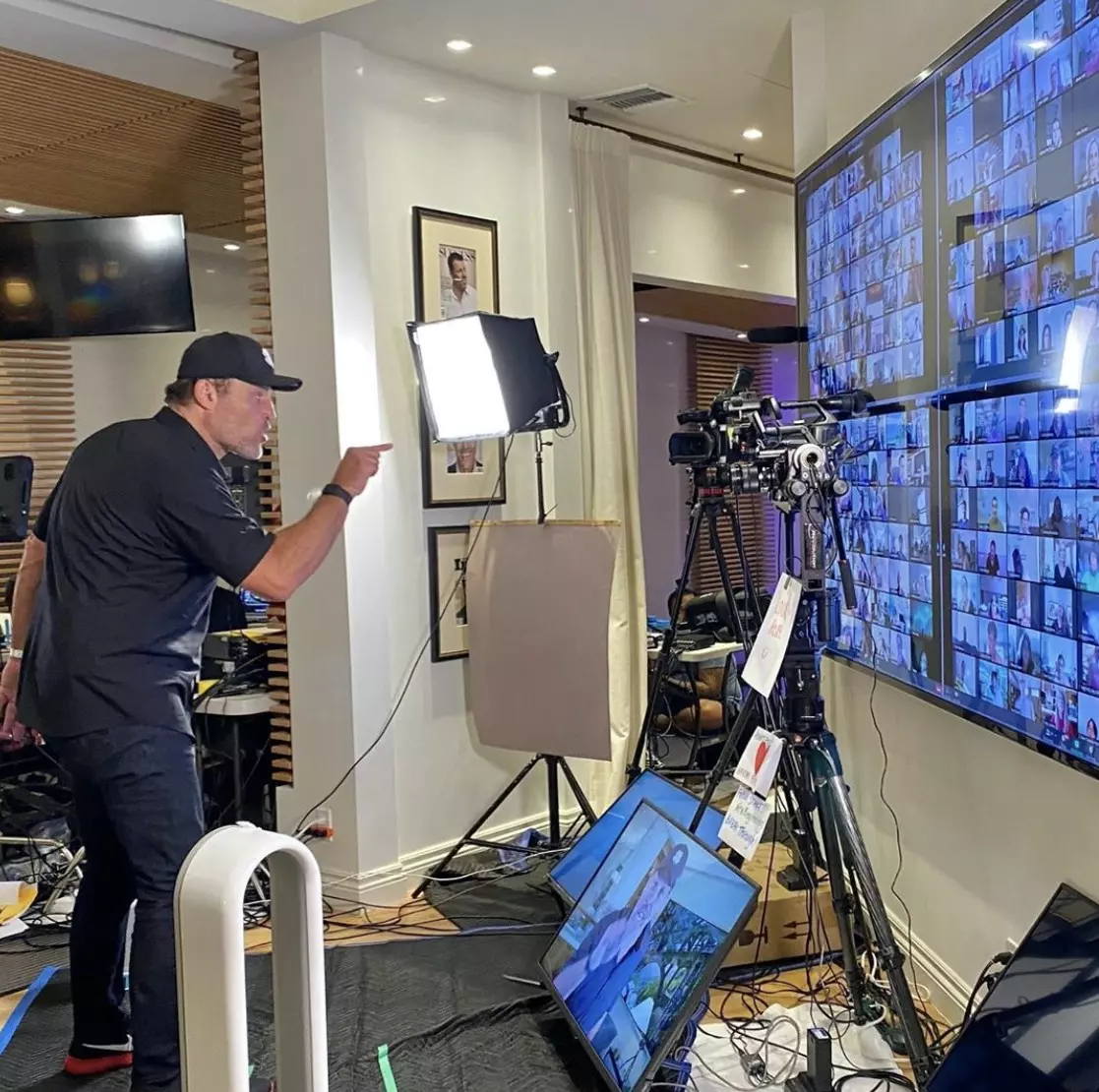
This is the lighting and studio setup for my standing virtual keynotes/Q&A
YouTube Vloggers have long employed setups that can use both a high-quality smartphone and/or a DSLR for a live stream. Software like OBS Studio even lets you control which camera feed you use in the live-stream, along with super-chats and other functions available within platforms like YouTube.
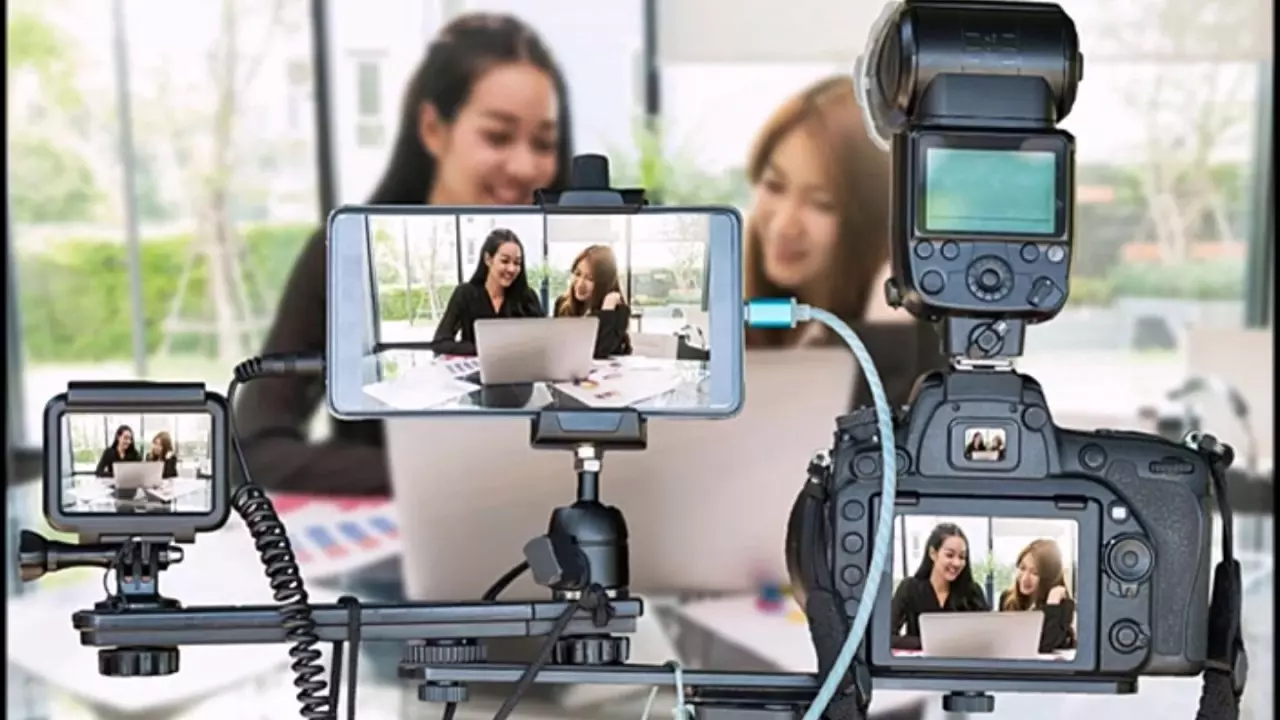
Even cable TV show hosts like John Oliver, Stephen Colbert, Seth Meyers and James Corden have had to reinvent their format during lock-down, as did Chris Cuomo while he transmitted from home for CNN.
Getting engagement right via a virtual stage from your living room takes some considerable effort. Even the use of integrated slide shows and visuals needs to be engineered to work effectively. The options I’ve used during the stay-at-home period include:
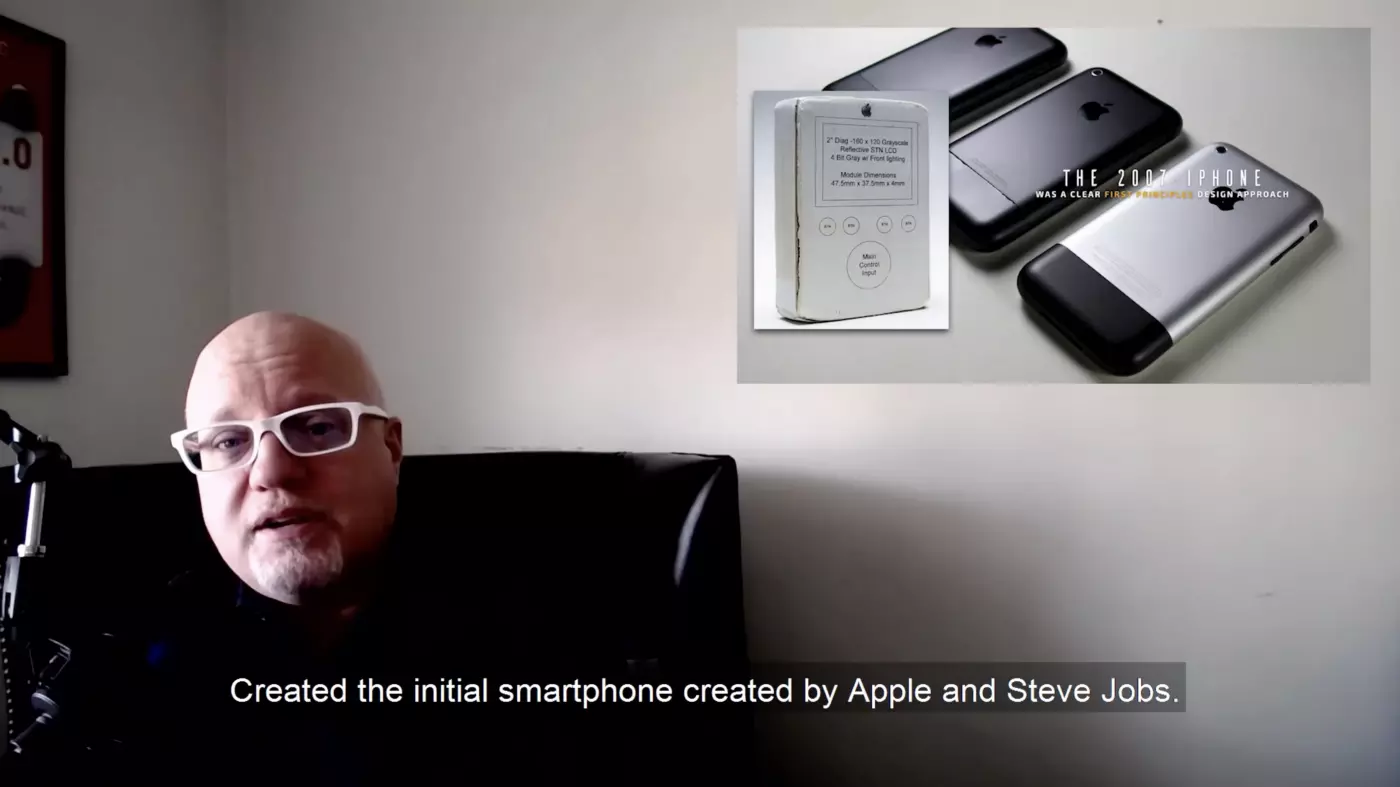
Picture-in-picture style (Image credit: Huawei Africa)
Picture-in-Picture — By creating white-space to the left or right of your speaking position, you can place a real-time feed of the presentation on the screen as you present.
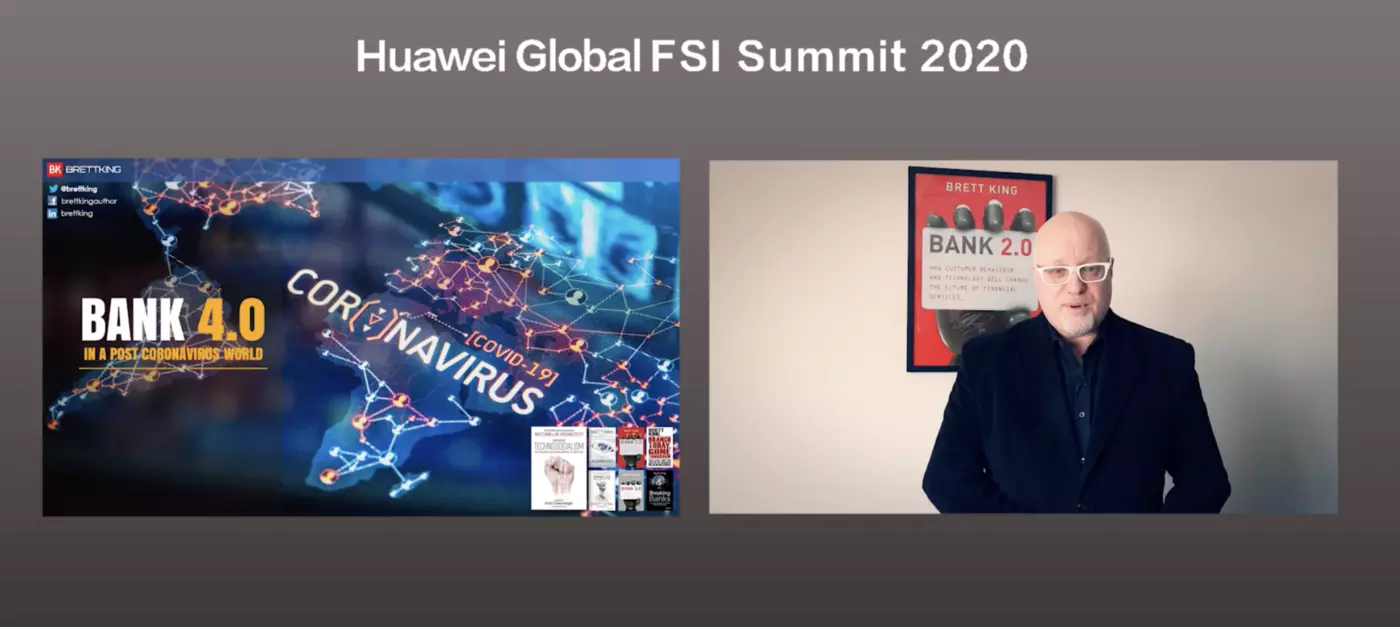
Side-by-Side format (source: Huawei Global FSI Summit 2020)
Side-by-side — Using a widescreen approach, you can simply display the keynote presentation and your video stream together, but the resolution on both tend to suffer this way
Edited/Blended Keynote — If you have the time you can create an integrated video that combines your speaking to camera, and overlays at key points images from your slide deck or even alternate video. Check out this example I did for our FuturistExclusive.com website which combines a seated keynote, embedded images and video overlayed into a blended narrative.
For conference and events organizers, obviously this is a depressed market and while there is intent to go back to in-person gatherings as soon as we can, in the meantime the world continues to turn and brands need to stay top of mind. Thus, we’ve seen more demand on virtual events this year than ever before as mainstay events like Web Summit, Convergence, Mobile World Congress, Finovate and others go virtual. What does that mean for organizers and speakers?
For organizers the temptation is to treat virtual events like a temporary replacement for in-person events. However, like the retail sector, groceries, restaurants, banking and other sectors where CoVID-19 has produced a shift to digital, the likelihood is that even when the conference business does come back, some of this business will remain virtual.
Conference organizers who develop strong virtual event capabilities and can offer blended event options in the future, will likely end up both expanding their overall audience sizes and their flexibility from a revenue perspective.
For event organizers and brands wanting to play in this post-CoVID event space, you’ll need a permanent virtual or blended event plan, and we’re going to need to train the industry as a whole that online does not equal free, does not equal lesser content or experiences. CoVID-19 is creating a rush to digital for the industry as a whole, but like the education sector, we’ve always assumed the online experience will be substandard to in-person gatherings. The leading players in this space are realizing that the quality of virtual events will differentiate their brands just as the quality of in-person events did in the past, but we have weak skill sets and nascent technology to deal with.
There are some advantages for organizers in the short-term though. Top speakers that previously charged $30-50k an appearance will be more likely to negotiate on fee for virtual events they can do from their home studio without extensive travel time. Not for free mind you, but definitely at a more affordable rate. This means you can get brand name speakers that you couldn’t previously afford, to generate the bums on seats you need for your virtual event space to grow.
The other obvious event is that people living well outside of the geography of a physical event you might run, who can’t afford to travel to your event, can now participate virtually in real-time. This gives attendees a feeling for being at the event, and tech like Zoom even allows remote attendees to participate in events from afar. This allows event organizers to open up their events to much larger audiences, well beyond their current geographical boundaries. In China, where virtual events have been big for a while, it’s not uncommon to find more than 100,000 people tuned in remotely, while just a few hundred might be at the physical event space in the real-world.
Even a few thousand more attendees virtually, will undoubtedly benefit the organizers, sponsors and attendees alike.
For speakers wanting to get out there during this period, investing in your home studio set up is a basic requirement. What might that look like?
Brian Fanzo has posted some great pics and video of his virtual keynote setup in his homes studio recently, even listing the gear he’s using and showing a video of him setting up his virtual studio. He’s also done some great work re-branding himself as a speaker that is ready for virtual events — see his website here.
Brian Fanzo setting up his home studio for virtual keynotes (credit: Brian Fanzo)
He has both a standing and seated option available.
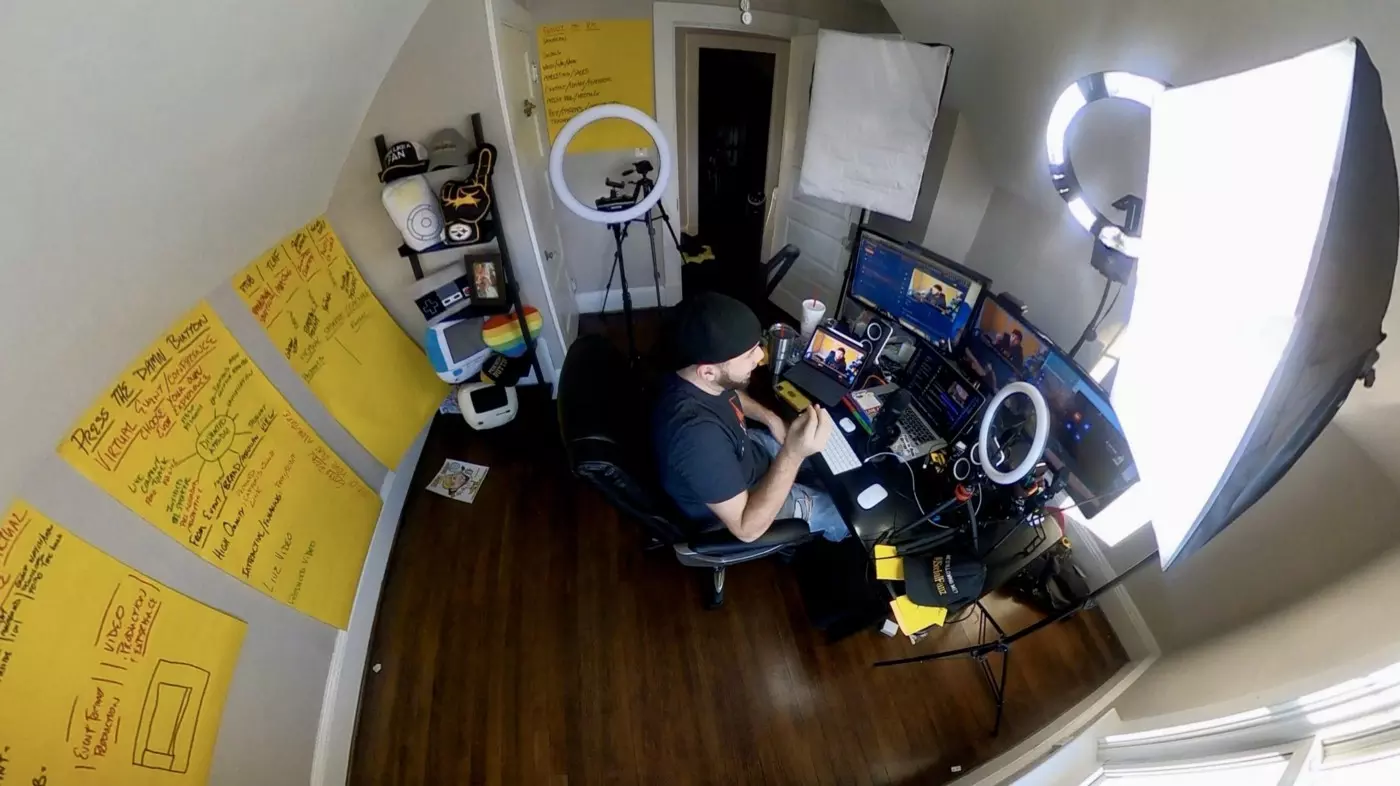
What will blended physical and virtual events look like post-CoVID? Whereas in the past, post-event content has been put up on the website for review or download, it’s likely that access to such content will end up more like newspaper pay walls today. If you want access to a keynote, panel or conference content in real-time, you’ll obviously have to pay a registration fee (albeit at a discount from typical in-person event rates). If you want access to content after the live event, it will probably work like how content creators on YouTube and other platforms monetize — you get access to basic content as a follower, but the high-value, exclusive content is via a subscription-based layer like Patreon.
So you might have 80% of your speaker content available free of charge, but want to see the exclusive keynote from Woz or Gary Vee and you’ll need to pay. For some speakers, they might even be prepared to do some sort of revenue share deals based on flow through of this exclusive content platform. Much like how royalties or residuals work for actors today.
In late 2020 and for 2021 as whole, however, the immediate problem will be that there will still be much trepidation from some sectors about attending in-person events. Sponsors will feel this and may want to wait until those fears die down, but if an event organizer can pitch them on giving attendees a choice of either attending the event in-person or virtually in real-time, it may keep the sector working.
So how do you go about creating a virtual event that mimics a conference stage and audience effectively?
While still new, the application of virtual reality into this space is obvious. In the medium-term as we offer both in-person and virtual options, the ability to create events in the VR space that give you the experience of sitting in an audience listening to your favorite speakers will evolve quite quickly. We know that Apple (Glass), Facebook (Oculus), Google (Magic Leap) and others are working on Augmented Reality glasses for the next couple of years that will allow you to visit virtual events without requiring a full VR headset.
This is what a VR-based conference stage looks like in today’s technology terms for an audience.
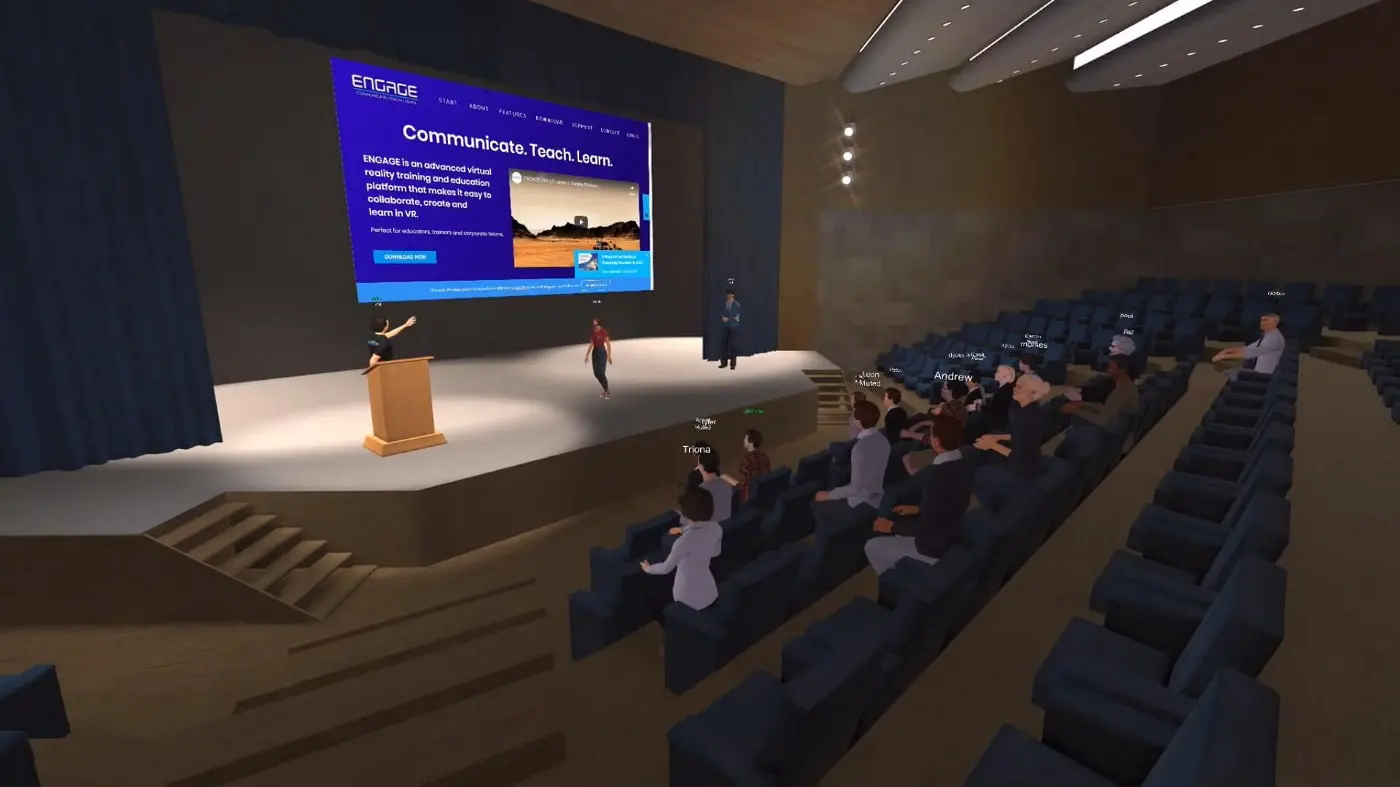
A keynote from a stage in VR (source: Engage)
And this is what is possible for something like a typical panel discussion at a conference, but simulated in the VR space. With the exception of resolution of the in-VR avatars, we’re getting pretty close to an acceptable simulation of a real-world event space.
A great example of a panel discussion in VR (source: VirtualiTeach)
If you’re using a VR headset like a Vive or Oculus Quest/Rift complete with tracking capability, you can already appear on stage and present just like you would as a keynote speaker on a real world stage today. We can track your hands for gestures, you can move around the virtual stage and you can embed presentations like Keynote, Powerpoint or even video on a virtual screen in the VR space behind you.
VR tracking capability is coming along rapidly, so that you can track full body movement and simulate your avatar very closely to how you would move on stage in the real-world as a speaker. While 6-point tracking is necessary for video games, animating virtual characters in movies, etc — we don’t need that for a virtual keynote. Just 4-point tracking available in a current Head Mounted Devices (HMD) with controllers is all you’d need for a virtual event today.
The biggest problem with this approach is that it generally requires you to wear a VR headset today. However, HTC Vive have created VR tracking nodes you can set up around you that don’t require you to wear a VR headset — this would enable you to do a keynote on stage in the real world and have your movements tracked for translation onto a VR stage simultaneously. The tracking nodes (or pucks) are just $99 each, so in theory you could wear two or four of these (hands and feet) on a real-world stage and offer a compelling VR stage experience synced with a keynote speaker, gestures, body movement and all. You need a VR base unit, and the trackers for the stage.
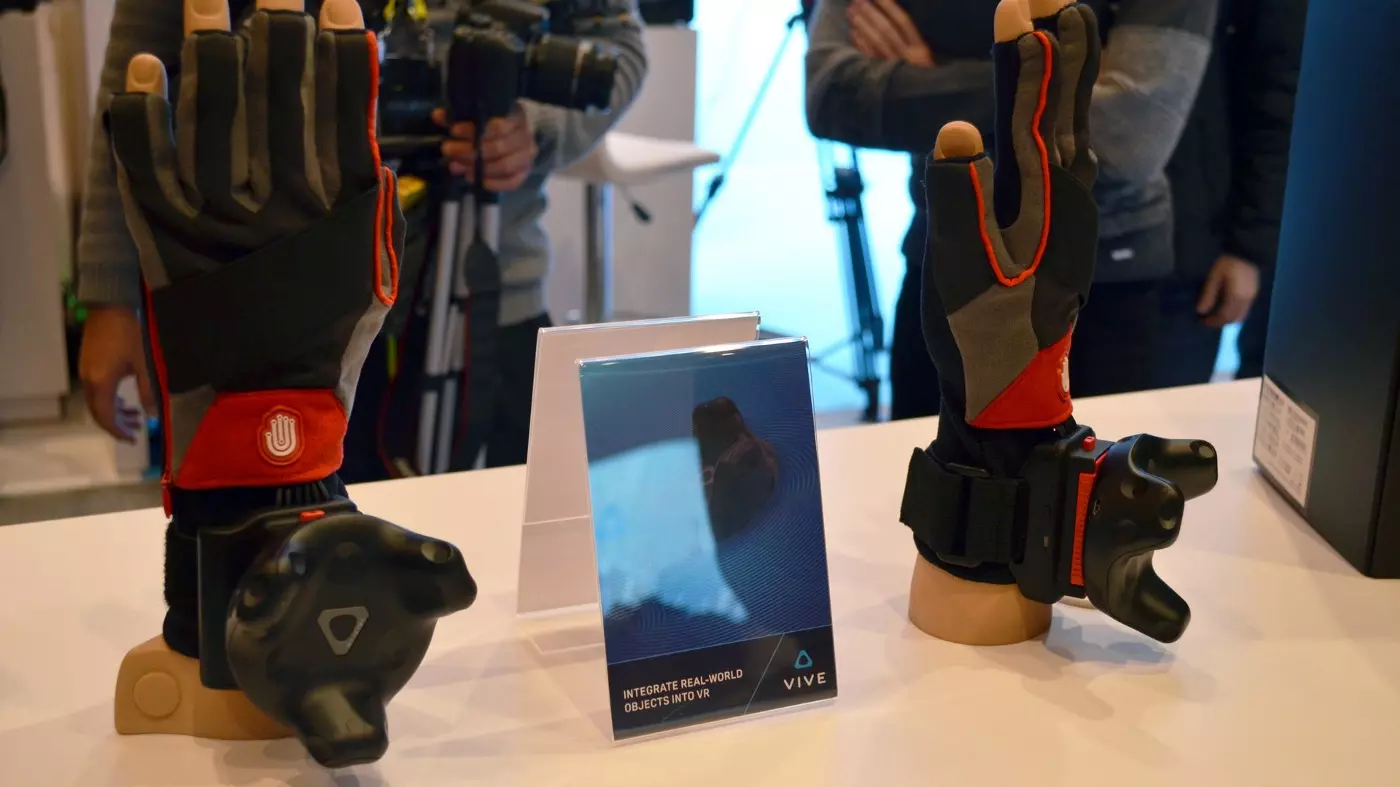
HTC Vive VR Tracking Pucks for mixed reality integration (source: Vive)
The in-person event and conference space may not return as quickly as we had hoped. The optionality of offering virtual attendance is something that will give event organizers a tactical advantage, especially when it comes to audience comfort and sponsor reach. Hybrid digital and physical events are going to be an art form and a differentiation over the coming years. It’s worth making the investment in platforms for allowing this flexibility.
Timely topic
Excellent article Brett !
Straightforward and helpful
Great article
Brett King is a futurist, best selling author, award winning speaker and host of a globally recognized radio show. He is also co-founder and CEO of Moven, a New York-based $200m mobile banking startup with over a million users. He is widely regarded as one of the top 5 global influencers in financial services, and his book Augmented was cited by China's President Xi Jinping as recommended reading on artificial intelligence. He advised the Obama administration on the Future of Banking, and has spoken on the future in 50 countries in the last 3 years. Brett focuses on how technology is disrupting business, changing behaviour and influencing society. He has fronted TED conferences, given opening keynotes for Wired, Singularity University’s Exponential Finance, The Economist, SIBOS and many more. He appears as a commentator on CNBC and has appeared regularly on the likes of BBC, ABC, FOX, Bloomberg and more. His radio show, Breaking Banks, began in May 2013. It was the first global show and podcast on FinTech, and has grown to be the most popular with an audience in 140 countries/ 3.6 million listeners.
Leave your comments
Post comment as a guest